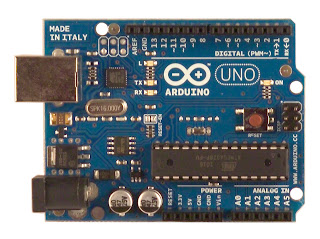Buffalo Technology -- the world market leader in consumer NAS (network-attached storage) -- plans to continue producing low-cost, high-powered Linux storage devices for home offices. Yet the release of Buffalo's new TeraStation Pro line-up, the company's first product family for both Linux and Microsoft Windows, signals a further expansion into the SMB space, said Brian Verenkoff, director of marketing and business development.

Offered in both rack and desktop pedestal configurations, the new Linux-based TeraStation Pro and Windows Storage Server-enabled TeraStation Pro WSS models each feature Intel dual-core CPUs with 2GB of RAM; dual Gigabit Enternet ports; high-speed USB 3.0 connectivity; and built-in RAID (Redundant Array of Inexpensive Disks).
Also front and center are distinctive, platfom-specific features for the embedded Linux and Windows flavors of TeraStation Pro, he noted, in a meeting with DesktopReview.com on a New York City press tour.
"We've always focused on providing the same capabilities that users would get from a Dell or an HP, but at much lower pricing," he added.
In a study issued in January, industry analyst firm In-Stat named Buffalo the world market leader in consumer NAS devices for the sixth consecutive year. Also according to In-Stat, the global consumer NAS market leaped 30.3 percent in unit shipments in 2010.
A subsidiary of Japanese-based Melco Holdings, Buffalo first entered the NAS market around seven years ago. Its name is derived from one of the company's first products, a printer buffer heavily promoted at Comdex trade shows a number of years ago. Buffalo's US headquarters is located in Austin, TX.
First Linux -- and now Windows, too
With new Terastation Pro models running on the company's traditional embedded Linux platform, Buffalo continues to target its long-time market of SOHO and "prosumer" enthusiasts, Verenkoff said.
In contrast, the new WSS line-up represents another step on an upstream journey Buffalo embarked on with the rollout of its first rackmount servers about four years ago, Buffalo, he said, now wants to stretch toward the medium-sized enterprise market, where profit margins are relatively high, even during the current economic downturn.
In the CES 2012 time frame, Buffalo expects to announce a new product eyed as pushing the company further in that direction, Verenkoff said, although he wouldn't specify which operating system (OS) the future product will use.
As for the already announced TeraStation Pro family, it comes in 1U rackmount and two-, four-, and six-bay pedestal configurations. A roomier eight-bay model is available for Linux, but not for the Windows side of the house. Capacity tops out at 12TB for the WSS models, and at 24TB on the Linux-enabled NAS boxes.
List pricing ranges from $499 to $3,499, and street pricing is even less, according to Verenkoff. The windows devices fold in Windows licensing fees. "Pricing is low cost for the Windows products, and lower for the Linux products," he maintained.
TeraStation Pro WSS: iSCSI Target and SIS Deduplication
Buffalo's new TeraStation Pro WSS storage hardware is designed to support SMBs' existing Windows environments. Powered by Microsoft's Windows Storage Server 2008 R2, an OS aimed at optimized file sharing, the WSS devices run Windows Server OS and are configurable through the Windows Shell. In contrast, Buffalo's Linux NAS devices are configured via Web browsers.
Other features of the Windows storage boxes include native support for NTFS (New Technology File System) and Microsoft's Active Directory; Windows search; full Windows print serving; DFS (Distributed File System) replication; IIS (Internet Information Services); Windows Server backup; iSCSI (Internet Small Computer System Interface) Target and iSCSI initiator; RAID 0, 1, 5, 10 + Dynamic Disk; and -- on rackmount models only -- SIS (Single-Instance Storage) Deduplication.
iSCSI Target, he noted, uses WSS storage as block-level storage for other servers, for purposes that include VM (virtual machine) storage through Hyper-V and VMware. Through the use of Dynamic Disk, multiple iSCSI targets can be combined into a single RAID 5 array.
For its part, SIS Deduplication is designed to reduce capcity utilization by removing duplicate files. Verenkoff estimated an average deduplication ratio for standard Windows backups of around 22:1. Data reduction from SIS Deduplication tends to be highest for engineering data archives and user home directories, and lowest for Web hosting data and for images, videos, and MP3 files, he said.
"Deduplicated data is placed into a common store and links are placed in the file system," he explained. "When users access their files, they access the common store file. If users modify the file, SIS automatically branches off a new file to reflect the changes."
The Linux and Windows NAS devices both support Windows Networking, NFS (Network File System), and FTP (File Transfer Protocol). Connections are unlimited for all Linux devices and for the rackmount Windows models. The Windows pedestal products support a maximum of 50 simultaneous connections.
Buffalo's Linux boxes: Failover, Google-like search, remote access from smartphones
Features specific to the Linux NAS boxes include built-in Web wizards; NTFS read and write permissions; DLNA (Digital Living Network Alliance) Media Server; Rsync-based Replication; Simple USB Backup Utility; Basic Print Server (print only); a Google-like Web-based search tool; and remote access from mobile devices through Apple iOS and Android OS apps.
In addition, five of the new Linux models also feature failover for storage system redundancy. "When writing a file to the TeraStation, the main TeraStation automatically copies it to the backup TeraStation," according to Verenkoff.
"When the main TeraStation becomes inaccessible, the backup TeraStation automatically assumes the main's role. [PC] clients can continuously access data without noticing any TeraStation failure," he contended.
The new Linux storage servers also support RAID 1, 5, 10, 6, 50, 51, 60 and 61, with RAID expansion.

